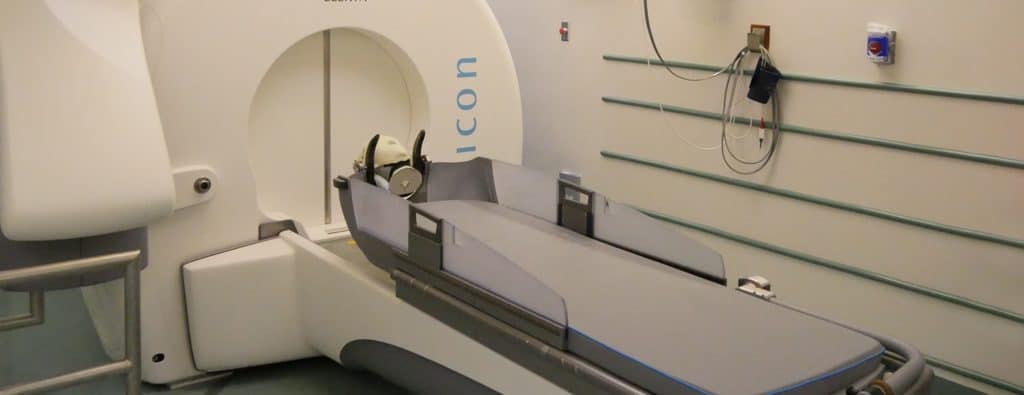Radiosurgery is surgery that involves the use of radiation to destroy targeted tissues with little or no damage to healthy surrounding tissues.
The procedure is also known as stereotactic radiosurgery and was developed by Swedish neurosurgeon Lars Leksell in 1949. Over the years, technological improvements in medical imaging and computing have led to increased clinical adoption of stereotactic radiosurgery and have broadened its scope.
Radiosurgery is usually used to treat brain tumors, epilepsy, trigeminal neuralgia and other various forms of cancer.
Clinical applications of Radiosurgery
While stereotactic radiosurgery is mainly used for neurological disorders, it is also useful outside of the nervous system in which in case it is referred to as stereotactic body radiation therapy.
Brain tumor. Stereotactic radiosurgery, such as Gamma Knife, is often used to treat noncancerous (benign) and cancerous (malignant) brain tumors, including meningioma, paraganglioma, hemangioblastoma and craniopharyngioma.
Arteriovenous malformation (AVM). AVMs are abnormal tangles of arteries and veins in your brain. In an AVM, blood flows directly from your arteries to veins, bypassing smaller blood vessels (capillaries). AVMs may disrupt the normal flow of blood and lead to bleeding (hemorrhage) or stroke.
Stereotactic radiosurgery destroys the AVM and causes the affected blood vessels to close off over time.
Trigeminal neuralgia. Trigeminal neuralgia is a chronic pain disorder of one or both of the trigeminal nerves, which relay sensory information between your brain and areas of your forehead, cheek and lower jaw. This nerve disorder causes extreme facial pain that feels like an electric shock.
Stereotactic radiosurgery treatment for trigeminal neuralgia targets the nerve root to disrupt these pain signals.
Tremors. Stereotactic radiosurgery may be used to treat tremors associated with functional neurological disorders such as Parkinson’s disease and essential tremor.
Other cancers. SRS may be used to treat cancers of the liver, lung and spine.
Types of Radiosurgery
Radiosurgery can be classified based on the radiation source and device used.
A. Gamma Knife Therapy

Gamma knife
The Gamma Knife is a machine that uses s use cobalt as a source for gamma rays to kill cancer cells and shrink tumors, delivered precisely to avoid damaging healthy brain tissue.
Each individual beam is of relatively low intensity, so the radiation has little effect on intervening brain tissue and is concentrated only at the tumor itself.
Gamma Knife radiosurgery has proven effective for patients with benign or malignant brain tumors up to 4 cm (1.6 in) in size, vascular malformations such as an arteriovenous malformation (AVM), pain, and other functional problems.
B. Proton Beam Therapy
This is a type of radiosurgery that involves the use of protons extracted from a machine called synchrotron or cyclotron to treat cancer. The cyclotron speeds up the protons thereby creating high energy. This energy makes the protons travel to the desired depth in the body. The protons then give the targeted radiation dose in the tumor.
Proton beam therapy has an edge over other forms of radiotherapy since the proton’s energy is deposited within a limited distance thereby sparing healthy surrounding tissues.
C. Linear accelerator-based Therapy
Linear accelerator (LINAC) machines use X-rays (photons) to treat cancerous and noncancerous abnormalities in the brain and other parts of the body. LINAC machines can perform stereotactic radiosurgery (SRS) in a single session or over three to five sessions for larger tumors, which is called fractionated stereotactic radiotherapy.
More: Lipoma Removal Cost


